How is your summer going? I’ve been spending a lot of time outdoors.
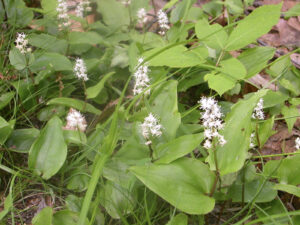
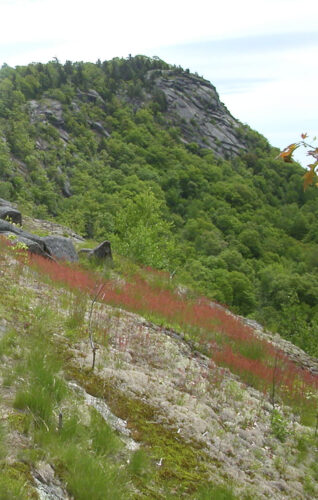
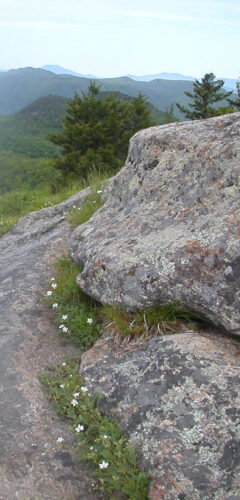
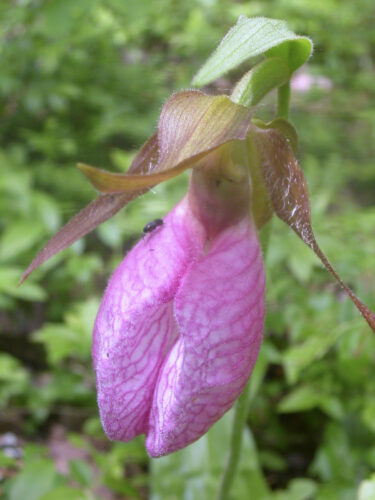
Happy Solstice everyone! I’ve been hiking a lot and using a lot of bug repellent. Yes, Black Flies are back, those tiny swarms that get in your eyes and mouth. They leave bites that itch and swell. They’re an important food for toads, fish, snakes, frogs, bats, and birds. So far, I haven’t had to use my head net. I just walk fast and avoid the lowland. I also think I’ve become less susceptible over the years.
Mercury went direct this week. Yay! I have that ineffable feeling good news is coming. Every garter snake along my path has seemed like a confirmation.
This picture was taken Sunday on Snow Mountain. Usually a crowded peak, but on this day I had it to myself.
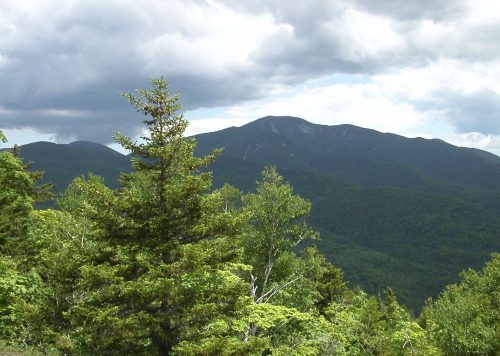
One of the best things about hiking in this place of abundant bugs is the birdsong. The Winter Wren was very vocal on this Midsummer hike.
Another favorite of mine is the Wood Thrush.
I meant to get this written yesterday, but repairmen scheduled to come Friday showed up Thursday instead. Can’t complain. As things stand during the pandemic, you’re lucky to get someone to come to your house at all.
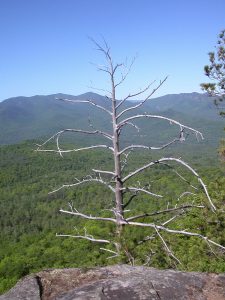
This week I hiked two lesser mountains called The Crows (Big and Little) and an extended ridge line called the Nun-Da-Ga-O Ridge, all on the same day. Nun-Da-Ga-O sounds like it could be an Iroquois word, or Anglicization thereof, but it’s just a name a local hiker made up.
I’ve hiked pieces of this trail, a few miles outside of Keene, New York, many times, but Wednesday I decided to start on Hurricane Road, summit Little Crow, traverse the coll to Big Crow, and descend a quarter mile to the Ridge Trail, which undulates up and down for several miles in numerous rock scrambles before descending at Weston Mountain to Lost Pond. From there, it’s flat easy trail to Crow Clearing, a parking lot where most people hike to Big Crow or Lost Pond, or hike the Nun-Da-Ga-O loop, bypassing the Crows.
Little Crow isn’t hiked much. There’s no parking lot, the signage is obscure, and Big Crow is a bigger mountain with an easier ascent. I chose a clockwise loop to get Little Crow out of the way early, since it can be difficult for the vertically challenged (a.k.a., short). I carried a heavy day pack , since I knew there would be no water until I got to the Pond, and the Ridge trail is unmarked, so I needed extra gear and clothing in case I lost the trail and spent the whole day wandering around up there.
I find climbing a treacherous trail with a heavy pack disconcerting. Some people find it harder going down, but I think it’s much easier to jump down than scramble up. I only needed to take off the pack to get over one ledge, as it turns out. I’ve climbed Little Crow many times, but this was the first time the trail was dry. I realized that what I interpreted as a difficult hike was mainly my reluctance to get my knees muddy and my bottom wet. Still, I cursed the giants who cut this trail.
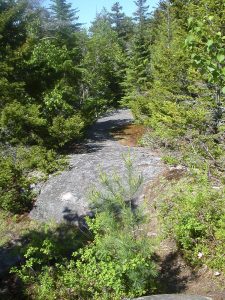
I enjoy Little Crow more for the grass, Red Pine, and lichen near the summit than the views. In the twenty years since I moved to the Adirondacks, many of the views I once enjoyed have partially filled in, as the forests continue to recover from the poor forestry and deliberate fire setting of the nineteenth century. At the summit the scent of balsam pine was pungent. The thing that struck me most when I moved to the Adirondacks from Tucson was the many fragrances, not just of balsam but of sweet fern and wet leaves. The desert only smells like dust, except after a rain, and it doesn’t rain often. In the Adirondacks, it rains a lot. I’ve been up on this range in the rain, in the fog, in many feet of snow, in approaching thunder, and on days when the black flies swarmed so heavy that you had to thread your sandwich under your head net. Usually, though, I pick a better day to be up here. On this day, the deep deep blue of the sky conveyed a limitless calm.
There’s long stretches of scrubby Red Oak on The Crows, not seen much in this area. On the descent into the coll, a Hermit Thrush sang buoyantly. Thrushes kept me company throughout the day.
There was one small section of rock on the descent that looked impossibly steep. I could easily have gone around it, but I calculated that the fall would be minor and there was a tree to grab if I slipped, so I went for it.
Success! It’s always gratifying to find a reasonable place to test the tread on your boots. I would need that security traversing the bare rock up to Big Crow.
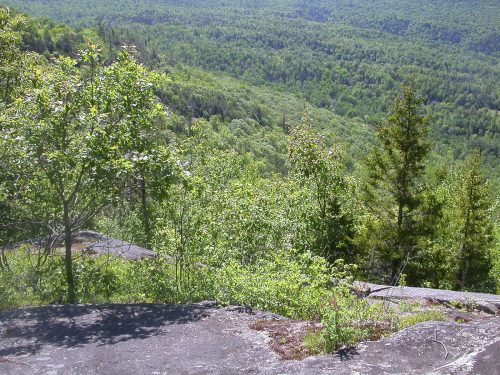
The views on Big Crow are impressive. You can see the Dix Range and the Great Range of the High Peaks. You can also see the weather coming in for quite a ways on this isolated and exposed peak. I was up here once with a very spiritual woman who was praying and praying and praying as the thunder clouds rolled in. Can she hear that or is she deaf, I wondered, cognizant of the quarter hour scramble, at least, to get down into the canopy. When she finally opened her eyes, she said that of course she heard the thunderstorm coming, but she wasn’t finished with her prayer. That’s one tarry at the summit I’ll never forget.
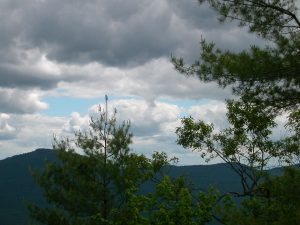
The wider loop I chose was about nine miles and some change, but mileage and net elevation gain doesn’t tell the story of an Adirondack hike. I hiked the same distance, on the Tongue Range over Lake George, two days earlier. That hike took four hours, including stops. This one took seven-and-a-half hours. Nun-Da-Ga-O is a continual up-and-down into depressions of hemlock, beech, and Yellow Birch, then along shallow brush and balsam, with exciting stretches of bare rock and exhilarating climbs. Though this is not an official trail, someone has been maintaining it, sawing through the downed Paper Birch trees that are yielding to maturing forest.

At one point I left the main trail and hobbled up a spur path to a wide cliff ledge for a rest. I’m a steady plodder, not a race-and-rester, on the trail. Even at a summit, I only stop long enough to rehydrate, snap a few pictures, and refresh bug spray. Partly it’s because I’m out for the journey, not the destination. I’m not much of a peak bagger. Also, I usually gauge my abilities against the trail accurately, and I don’t need to rest. There are people, almost invariably young men, who try to race to the summit and brag about their “time,” and I don’t know how to express the derision I feel for this approach to wilderness. Nun-Da-Ga-O is not a scary-steep enterprise, but there is a long way to fall in places if you trip while you’re rushing to “beat your time.”

The main reason I spend less time drinking in the view is probably because I live here. Not that I’m inured to the beauty–how can you be? But I’m not indulging in a few days or a few weeks away from it all. My life is here. I have chores before I leave in the morning and my own dinner to cook when I return, possibly with a few have-to’s yet in the day. The next day will probably involve errands or work, even if it’s only writing a blog post, so I’ll need to get to bed early. When you live here, you fit your hiking into your life. I often wonder what it would be like to be on vacation in the Adirondacks; I started a new job the day after I arrived here. Not that I’m complaining. I know I’m incredibly lucky. I also know that when you move to an idyllic spot, you take your life with you.
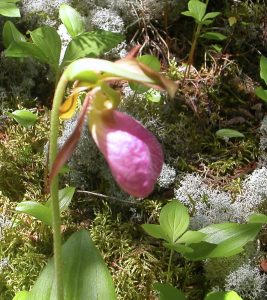
Stepping onto that ledge off the unofficial trail, I stepped between worlds. I reapplied bug repellent, poured some electrolyte replacement powder into my water, snapped some pictures, then just sat. I studied the peaks in the distance and named them. I listened to a Winter Wren singing exuberantly on and on and on. I entered a feeling of aloneness that’s difficult to describe because I don’t understand it myself. I know how to avoid crowds in the Adirondacks and I’m often alone on the trails, sometimes for a full day. I don’t think twice about it. I wasn’t totally alone on this hike. I believe I saw a total of seven people. I don’t like meeting people now that we have COVID-19, but prior to the pandemic I smiled and greeted a fellow traveler as a kindred spirit. With the exception of those beating their time, I like other hikers.
But in that place I felt isolated and alone, in a way that connected me to the rocks and the leafy forest below me, to the blue sky and the Winter Wren singing his complex joyful song. I haven’t felt that far away from other people and their bullshit for a long time. It was like a big bag of other people’s stuff dropped off my shoulders, over the cliff. I felt no pressure, no reason even, to move. I had miles yet to walk, but I knew the trail had no unfair demands to make of me. I don’t even remember if I prayed; the space itself was like a prayer, the heart singing gratitude without reflection.
Hiking is not really about geographical space. It’s about a meeting of trees, rocks, animals, and human. Also sky and wind. It’s different every time, and the difference itself is a gift. I’ve hiked Nun-Da-Ga-O as a bug-bitten endurance event. I’ve been disoriented up there, wandering around and around trying to find the cairn. I’m not trying to convince anyone to hike The Crows or Lost Pond or the ridge between, necessarily. It’s not about where you go, it’s where you are when you get there.
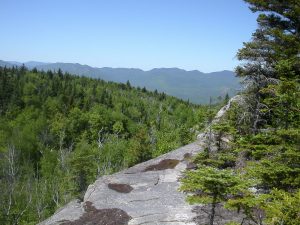
I hit the trail again when I felt myself becoming sleepy. The day was far from over, and there were challenges still ahead. An even bigger cliff loomed ahead of me further on, and I hoped the path would lead up there. It did! There was a rocky scramble to view of Lost Pond below. Above, a pair of Golden Eagles circled.
Golden Eagles are rare in the Adirondacks. They like the high cliffs and open spaces that are more common out West. I’ve been on hikes where others pointed to Golden Eagles in the distance, too far for me to distinguish from any other large bird, but this was the first time a pair circled close enough for me to identify. This time, I remembered to pray.
By the time I got to the last view, Weston Mountain, I was ready to go home, and I even wondered if I was walking in circles, as every rocky outcrop was beginning to look the same. I actually got out my topographical map, a thing I mostly seem to carry around for luck. The Pond was directly below me, so I was on the right path. I was sure of it as I descended Weston, which was the unrelentingly steep sonofabitch I remembered. Yes, I can pray to a mountain and call it a sonofabitch on the same hike. Those who have done a grueling all-day traverse can understand.

I did not stop at Lost Pond, as planned, because a trio of juvenile ravens had already claimed the space. Raven fledglings scream incredibly loud, and you would think something bizarre and terrible was going on if you didn’t know better. They like to hear their own voices. Some people mistake these cries, which can go on for hours, for a person screaming. Fortunately I knew what was going on, so I didn’t panic, but I took the jarring noise as a sign that it was time to make my way home. I still had three miles to go, on the flat. The beautiful, haunting notes of the Wood Thrush punctuated the late afternoon, as I headed for the car.
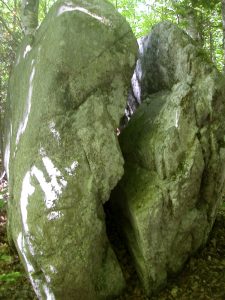
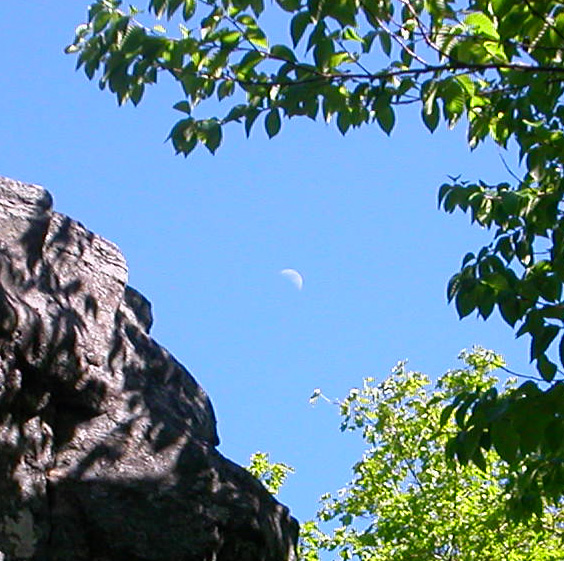 This Friday, June 21st, at 12:04 AM Eastern Daylight Time (5:04 Universal Time) the sun reaches the northernmost point in her travels, marking the Summer Solstice. Of course, the sun isn’t really moving north; the northern hemisphere of the earth is tilting toward the sun and will begin a reciprocal tilt following the solstice. But from our perspective, the sun has come to the north. This is a high energy time, wonderful for spell work or for group ritual. Traditionally this is the time when covens that have “hived off” to form their own groups return to the mother coven for reunion. Interestingly, it is not the midday zenith of the sun that is considered the most auspicious but rather the short twilight night.On Sunday morning at 7:32 AM Eastern Daylight Time on June 23rd, we have the full moon in June. The June full moon is always special. Women used to gather dew from the leaves of the trees just before sunrise at June’s full moon to use in their spells. This dew is potent for love charms or anything that the heart desires. This full moon arrives twenty-two minutes after the moon is at perigee, the nearest point in her orbit around the earth. At perigee the moon’s influence is obviously stronger, so a full moon at perigee is very powerful.In the past I have expressed skepticism over certain dates that are promoted as unusually auspicious times for doing magic, but this weekend really is a big deal. The perigee full moon occurring so close to the Summer Solstice makes this an extremely powerful time for magic. Analyzing the various factors involved (waxing versus waning moon, astrological sign of the moon, moon void-of-course, and proximity to the solstice or full moon), I would say that the evenings of Friday June 21st, Saturday June 22nd, and Sunday June 23rd are about equally powerful for those living in North America, although I lean very slightly in favor of Saturday the 22nd. If you live on the West Coast, I would recommend a specific time for ritual: that would be during the very early morning hours of June 23rd between 1:10 AM and 1:30 AM Pacific Daylight Time. At this time the moon has entered Capricorn, the astrological sign of her fullness, and the sun will be at her nadir.Since Mercury is getting ready to go retrograde, don’t expect the results of your spells to manifest immediately. Project your energy toward attaining goals that can come to fruition toward the end of the summer or later.If you live in the southern hemisphere, this Winter Solstice weekend is also powerful for magic. The energies particularly favor the beginning of new projects and (metaphorically) the planting of new seeds.
This Friday, June 21st, at 12:04 AM Eastern Daylight Time (5:04 Universal Time) the sun reaches the northernmost point in her travels, marking the Summer Solstice. Of course, the sun isn’t really moving north; the northern hemisphere of the earth is tilting toward the sun and will begin a reciprocal tilt following the solstice. But from our perspective, the sun has come to the north. This is a high energy time, wonderful for spell work or for group ritual. Traditionally this is the time when covens that have “hived off” to form their own groups return to the mother coven for reunion. Interestingly, it is not the midday zenith of the sun that is considered the most auspicious but rather the short twilight night.On Sunday morning at 7:32 AM Eastern Daylight Time on June 23rd, we have the full moon in June. The June full moon is always special. Women used to gather dew from the leaves of the trees just before sunrise at June’s full moon to use in their spells. This dew is potent for love charms or anything that the heart desires. This full moon arrives twenty-two minutes after the moon is at perigee, the nearest point in her orbit around the earth. At perigee the moon’s influence is obviously stronger, so a full moon at perigee is very powerful.In the past I have expressed skepticism over certain dates that are promoted as unusually auspicious times for doing magic, but this weekend really is a big deal. The perigee full moon occurring so close to the Summer Solstice makes this an extremely powerful time for magic. Analyzing the various factors involved (waxing versus waning moon, astrological sign of the moon, moon void-of-course, and proximity to the solstice or full moon), I would say that the evenings of Friday June 21st, Saturday June 22nd, and Sunday June 23rd are about equally powerful for those living in North America, although I lean very slightly in favor of Saturday the 22nd. If you live on the West Coast, I would recommend a specific time for ritual: that would be during the very early morning hours of June 23rd between 1:10 AM and 1:30 AM Pacific Daylight Time. At this time the moon has entered Capricorn, the astrological sign of her fullness, and the sun will be at her nadir.Since Mercury is getting ready to go retrograde, don’t expect the results of your spells to manifest immediately. Project your energy toward attaining goals that can come to fruition toward the end of the summer or later.If you live in the southern hemisphere, this Winter Solstice weekend is also powerful for magic. The energies particularly favor the beginning of new projects and (metaphorically) the planting of new seeds.
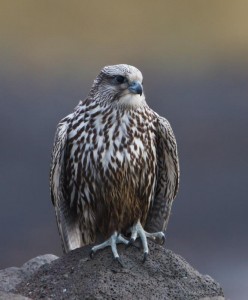
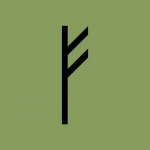
Frejya’s representation throughout the lifecycle suggests an affinity with the sun, which defines the cycle of the year. Her association with both the winter and the summer solstices reaffirm this connection, as does the Yule fire and the summer bonfires. Frejya’s amber necklace represents her command over the sun and hence the passage of time. Those who see Frejya as blond may be focusing on her sun aspect, perhaps dazzled by the brightness of her nimbus. It is interesting in this regard that the Egyptian sun god Horus also takes the form of a falcon.Although Frejya is a goddess for all seasons and all ages, I want to explore Frejya’s death aspect more closely. I will do so in a later installment of this series.


Matthews, Caitlin and John Matthews. The Encyclopedia of Celtic Wisdom. Shaftesbury, UK: Element Books, 1994.Matthews, John and Caitlin Matthews. The Encyclopedia of Celtic Myth and Legend. Guilford, CT: Lyons Press, 2004.Monaghan, Patricia. The Encyclopedia of Celtic Mythology and Folklore. New York: Checkmark Books, 2008.